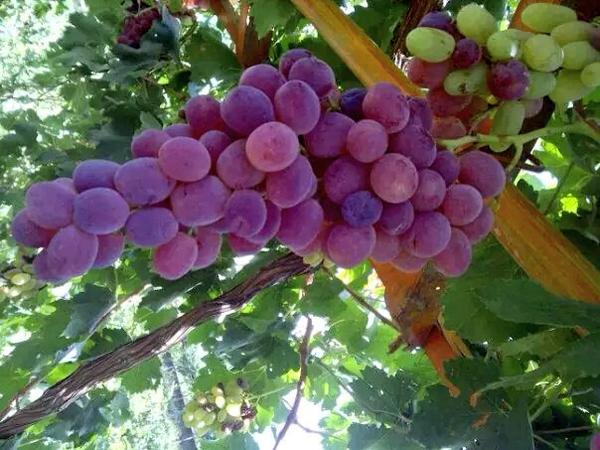Grapes are the essential for every Afghan family dinner over the years. The cultivation and preservation method for grapes in Afghanistan is a slightly different and traditional method used by them over years. The geographical area of Afghanistan has been growing grapes since at least 2000 BC, making it one of the most ancient grape growing methods on the planet. Let us discuss this in detail.
Primary Form of occupation:
Agriculture has always been the primary pursuit of the people in Afghanistan around 70% of the population live and work in rural areas. There are nearly 65 million hectares of land in that country of which:7.8 million hectares are nearly Agriculture lands. So, you can assume that approx 10 million lands in afghan are mostly owned for agriculture by the farmers. Grapes and raisins are major productive horticultural crops of Afghanistan due to the large area of plantation and the high-value demand received until now. Afghanistan contains a cultivated land area of 78,405-hectare grapes cultivation land. In Afghanistan grapevine is mostly commonly grown by a traditional method called earth–trellised “Jui” system. It is one of the oldest and Earliest Methods that has been followed by Farmers of Afghan. Furthermore, freestanding head system, and now it’s practising T and I (cordon) systems.
Post-Harvest Practices and Productivity of grapes:
Cultural and post-harvest practices are generally still traditional, disease, pests’ control is not applied properly during the cultivation and preservation process. But the ministry of Agriculture, Irrigation, and Livestock of Afghanistan with the collaboration of the national and international organisations is working to improve not only grapes production but all agricultural commodities that were practised in Afghanistan over the years. With its fertile soil and dry-warm climate high up in the mountains, Afghanistan is rich in fruit variety. At least 1.5 million tons of grapes are produced each year, according to the Ministry of Agriculture, Irrigation, and Livestock. A myriad of local varieties of grapes such as Hussaini, taifi, Kasandra, lal, kata, gholafan, red Kandahari, raucha, shondakhanai, keshmeshi, black keshmeshi, and Mehr amaldi have been developed over the centuries to suit different palates and requirements. Grapes are at best a summer crop for them
Ancient Method-Kangina:
The people of Afghans have been preserving the grapes for winter using mud-straw containers called Kangina for hundreds of years, keeping their grapes fresh beyond the growing season, which is one of the oldest methods of preserving grapes. The Kangina looks like two loaves of sourdough bread stuck together, each Kangina is made of two layers of wet clay-rich mud, with each layer being moulded into a bowl shape and then put into the sun to bake. When each pair of rustic “earthenware bowls” is completely dried, around 1kg of ripe unbruised fruit are put inside, and then sealed with another serving of mud to form a single closed, air-tight vessel. The Kangina is then stored in a cool, cellar-like space, away from direct sunlight, with some people preferring to bury the vessels underground. The fruit remains fresh for up to 6 months providing Afghans with a taste of the sweet succulence of summer in winter.
Real-time user:
Ziaulhaq Ahmadi a fruit seller and real-time user of the Kangina method of preserving grapes, who always makes bowls of mud and straw for fresh grapes. The area of Ahmadi is especially famous for its grapes. He also mentioned that each season, when the lush fields turn red and yellow, Ahmadi buys 1,000 kilograms of grapes. About half of them he sells fresh; the other half he preserves using Kangina and resells for a profit months later. “We use mud from the village, mix it with straw and water, and then form the bowls,” After laying the bowls in the sun for about five hours, they place the grapes in the dry bowls,seal with more mud and store in a dry, cool corner over the winter. Many families in the village do the same, in the process that takes up to 20 days. Ahmadi gently taps the mud bowls to crack them open. Seems like fresh and tastes sweety as Ahmadi expects.
In conclusion, the Process of cultivation of grapes through this method provides fridge free preserving solutions for economically backward people and fruit sellers, you should also note that this form of preserving grapes can also lead to dangerous causes. This method is not a healthy way to do so.

